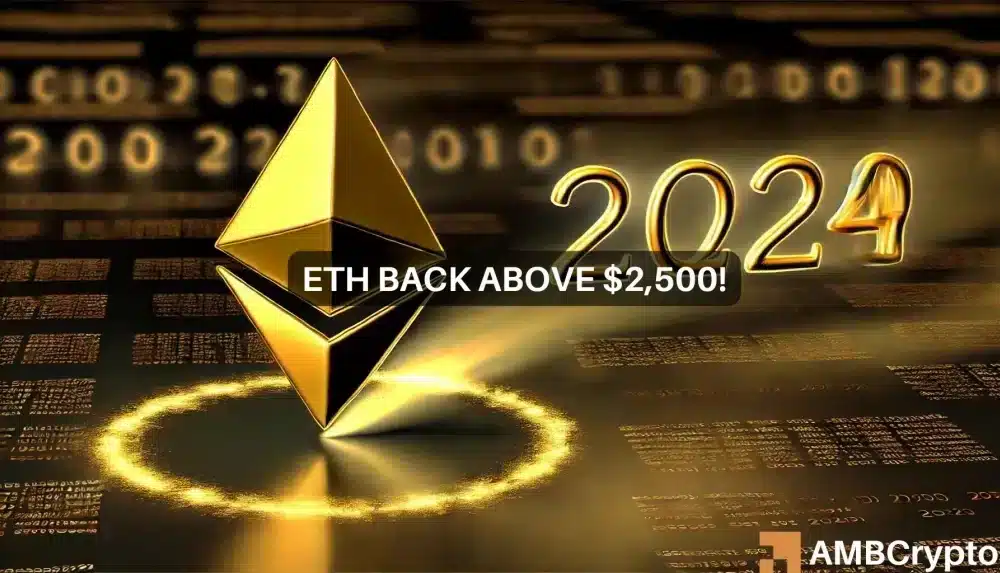Despite Ethereum’s [ETH] price surpassing the $2,500 threshold, the downward trend observed over the past two months continued to influence its trajectory. Analysis of longer timeframes indicated that $1,949 and $2,496 stood out as crucial levels to monitor.
Discussing the potential breakout, CryptoQuant expert Burak Kesmeci emphasized in a recent X post that a weekly close above $2,496 could signal a positive outlook for ETH bulls. The chart’s levels were determined based on Ethereum’s decline from $4,807 to $1,067, a trend that initiated in November 2021.
In addition to the favorable TD Sequential buy signal for ETH, CryptoCrypto’s examination of various Ethereum metrics provided a mixed outlook, without unanimous optimism.
Historical Data Reveals Lowest 2024 In/Out of the Money Metrics
The in/out of money data for 2024 hit its lowest point on September 16th, with only 59.4% of wallets holding profitable positions at that time. However, the percentage increased to 64.4% by September 20th.
This marked the lowest success rate for wallet addresses during 2024, reflecting on Ethereum’s trading price of $2.3k less than two weeks ago.
Considering ETH started the year at $2,250, the progress so far has been notably modest, especially in comparison to Bitcoin [BTC].
Recent netflow metrics indicated a $439 million outflow of Ethereum from exchanges in the last 24 hours. While the 7-day and 30-day changes showed less drastic shifts, they highlighted the fluctuating pattern of netflows.
Though accumulation efforts are evident, the pace remains gradual, prompting investors to anticipate a rapid surge in demand in Q4 of 2024.
Assessing Momentum and Sentiment Among ETH Holders
On September 21st, the 90-day MVRV stood at -8.45%, indicating substantial losses experienced by holders over three months. The sharp decline in June caught many investors off guard, with the metric plunging to -27.98% on August 7th.
This scenario underscores the challenge Ethereum faces in achieving rapid price hikes, given the presence of holders likely to sell during rallies to break even.
Notably, Open Interest has steadily risen over the past month, suggesting increased speculative engagement. With the 7-day RSI at 46, the weekly momentum appears bearish yet teetering on the brink of a bullish shift.

